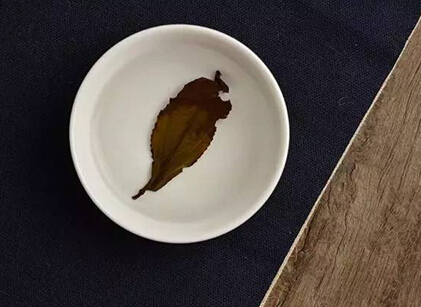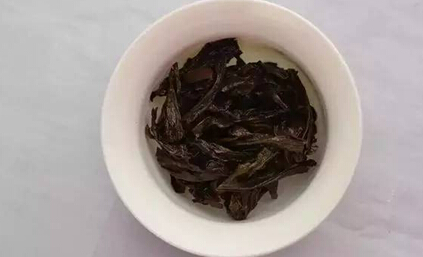The leaf bottom is the unfurled leaves of dried tea after being brewed with boiling water.
Before brewing, tea is like a fully armed beauty, but after brewing, it removes all its makeup, revealing the leaf bottom—completely natural and exposed in every detail.
Firstly, the leaf bottom allows experienced drinkers to identify the tea tree variety. Each tea tree has its own genetic code, hidden within the dark, dried leaves before brewing. But now, with the leaves unfurled, we can see the size and shape of the leaves, the direction of the veins, and the serrations along the edges. These details reflect the tea tree variety.
Secondly, we can also determine the degree of roasting the tea leaves have undergone. If the leaf bottom is yellow and bright,舒展 (spread out), with few scorched leaves and no "toad bubbles," then the roasting level is low; if the leaf bottom is reddish-brown, curled, with many scorched leaves and toad bubbles, it indicates a higher level of roasting.

The leaf bottom can tell us the fermentation level of this brew of tea. When we unfurl a rock tea leaf bottom, we often see that the center is green or yellow, while the edges of the leaf are red. That red part is the fermented portion, which is the most special and core aspect of Wuyi Rock Tea's processing. The ratio of red to green indicates the degree of fermentation of this tea. Of course, if we encounter a fully roasted tea where all the leaves are carbonized, our judgment becomes ineffective.
The leaf bottom can also indicate the tenderness of the leaves at the time of picking for rock tea. Large and hard leaf bottoms indicate older leaves, while small and soft leaf bottoms indicate tender leaves.
The leaf bottom can also show the method of tea picking: leaves picked by hand are intact, while machine-picked leaves will show neat cut marks.

Finally, the leaf bottom is also filled with the secrets of the season. Spring tea, after fermentation, mostly has even red edges and soft leaf texture. Summer tea mostly has a drier appearance, uneven red edges appearing brownish-red or dark red, and stiff leaves. Autumn tea has a grayish and mixed color, with uneven red edges on the leaf bottom. Of course, to make the above judgments, we must also consider the taste of the tea for a comprehensive assessment.